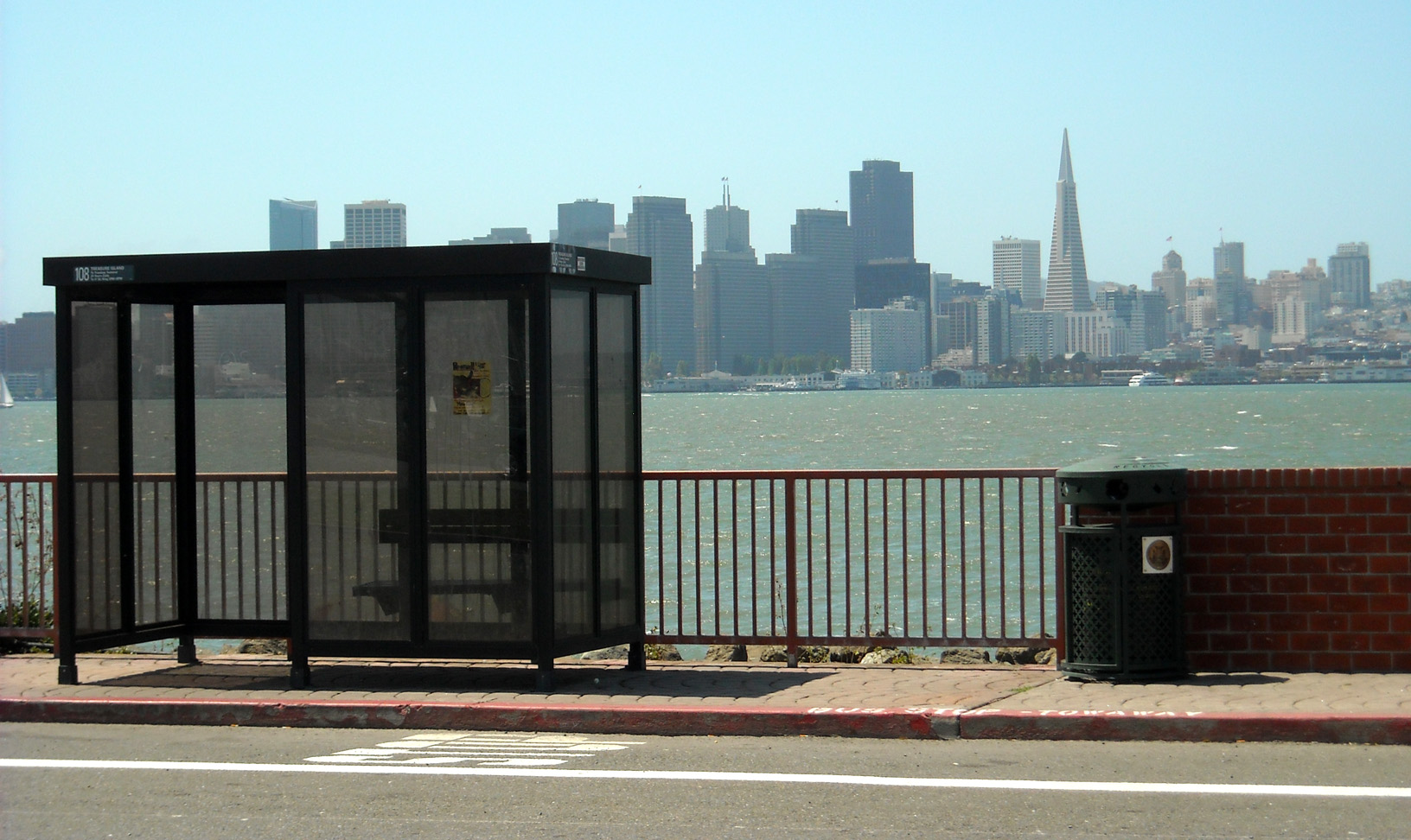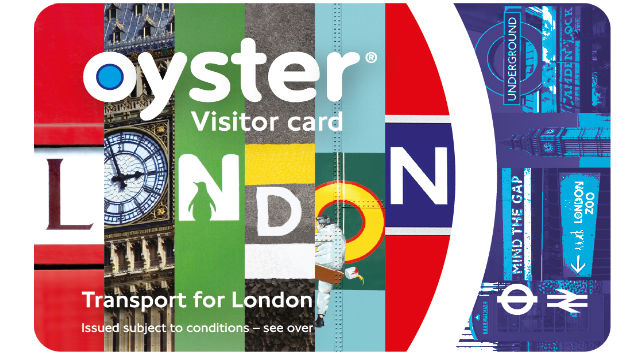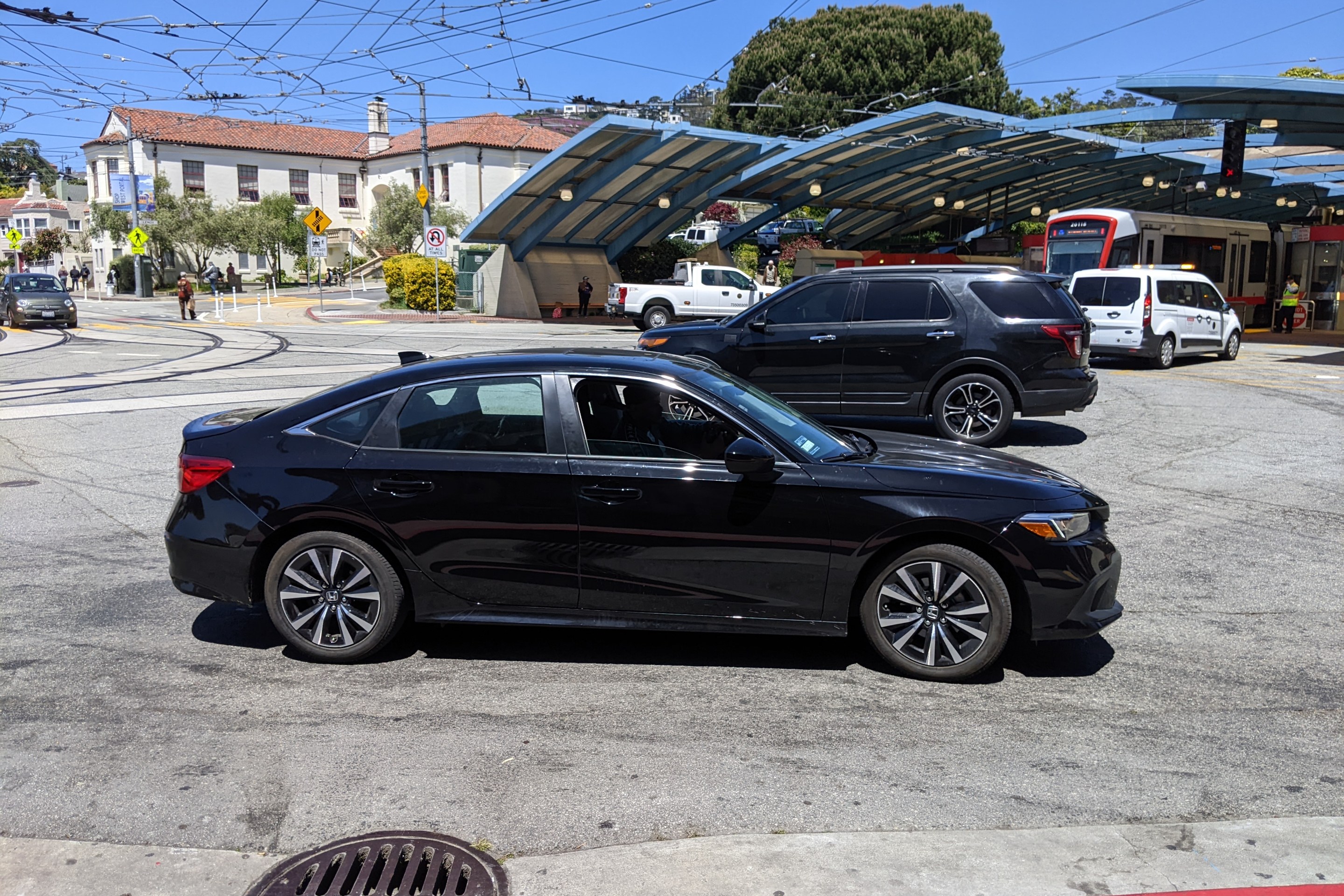Editorial: Turn Treasure Island Pass into Bay Area Fare Zone 1
4:10 PM PDT on October 11, 2018

A bus stop for Muni’s 25 Treasure Island. Photo: Wikimedia Commons
Note: Metropolitan Shuttle, a leader in bus shuttle rentals, regularly sponsors coverage on Streetsblog San Francisco and Streetsblog Los Angeles. Unless noted in the story, Metropolitan Shuttle is not consulted for the content or editorial direction of the sponsored content.
Treasure Island currently has 1,500 residents and one convenience store, explained Priyoti Ahmed, a planner with the San Francisco County Transportation Authority (CTA), at a SPUR talk Tuesday about fare policies in the Bay Area. Future developments will increase that number to 25,000 residents in the next 17 years. To get people on and off the island, the plan is to add more Muni service, create an AC Transit bus line to serve the island, and add ferry service (note: currently the only way to take public transit to Treasure Island from the East Bay is to go all the way into San Francisco and backtrack via Muni's 25 bus).
Even with the addition of a ferry line and an AC Transit bus to Treasure Island, that will still mean three different transit agencies, and fares, just to get on and off--not exactly the best model for encouraging transit use on the island. "We wanted to create a transit pass that one can use for any direction regardless of the agency," said Ahmed.
Thus was born the idea of the Treasure Island (TI) Access Pass, which will be provided to residents of the island and funded through homeowners association dues and rent and other sources of revenue. "We really want Treasure Island travelers to have a seamless transit system, not figuring out how much it costs for each ride," she added.
That's all great. But couldn't the Access Pass be leveraged into the start of a rational, integrated fare-zone system for the entire region, where it doesn't matter what transit agency you use or whether you're taking a ferry, bus or train? In other words, the Access Pass could become Bay Area Zone 1, stretching from downtown San Francisco across the Bay to the first few stops in Oakland.

"There was an opportunity here to make this a widely available, publicly-facing product that would have helped resolve some of the mess that is fare policy and customer experience in the Transbay corridor. This opportunity wasn’t taken by the Treasure Island Mobility Management Agency (TIMMA), which had ultimate responsibility for the bespoke product that ended up being created," wrote Beaudry Kock, one of the founders of Seamless Bay Area--an advocacy group dedicated to getting all Bay Area transit onto a seamless, zone-based fare system where a universal ticket and zone structure works across all agencies.
"The Metropolitan Transportation Commission (MTC), however, also bears responsibility because it had an opportunity to weigh in in favor of a more regionally-minded approach, and it did not," he added. "We adopt these bespoke, niche products far too often, and it's symptomatic of a broader malaise in the MTC’s leadership."
But maybe it's not too late to leverage the TI Pass into something more.
Streetsblog followed up with Ahmed and it sounds as if some of the details about how each transit agency is compensated are still being worked out. They'll also be rolling bridge tolls for private cars into the mix, which will help fund operating costs for AC Transit to serve the island, probably with a bus that runs from downtown Oakland and/or West Oakland. The important thing, she said, is residents of Treasure Island will have a pass that takes the pain of calculating costs for each trip out of the equation, making it easier to use transit. "As a resident, you get a pass that lets you go both directions whether you use it or not. If you never use the ferry, for example, you still have a product that will let you use it."
Other Bay Area transit passes, such as the student 'Gator' pass, usually only offer a discount on transfers between transit agencies. This may be the first time a pass is offering to fully cover three transit modes in full. In that sense, TIMMA is really attempting to make its TI Access Pass operate, at least from a customer perspective, like a zone pass on international transit systems. But they're still forced to work around the structural/political limitations of the way transit is operated in the Bay Area. "Ultimately, you can’t do regional passes (accumulators, etc.) without regional revenue sharing agreements, and we just don’t have those," wrote Kock. "But, you might ask, is this an opportunity to create one?"

Imagine if the Treasure Island program were expanded, so a renamed TI pass could also be used on BART between downtown Oakland and downtown San Francisco, in addition to ferries and buses in this zone. From there, a coordinating authority could create additional zones where travel is integrated and rationalized across all agencies. Fares would be pooled and then disbursed according to performance metrics and ridership, as is done in European cities (which results in higher overall transit ridership and, ultimately, more revenue for all the agencies involved).
"As a concept and as an improvement to the transit rider experience, the Treasure Island Access Pass is wonderful and is well worth treating as a first step," wrote Adina Levin of Friends of Caltrain and editor of the website Green Caltrain. She hoped it will be scaled up with "better technology and better policies."
"If you want to do it in a much bigger platform, some agency has to take the lead," said Ahmed. MTC is, of course, the official "coordinating agency for the nine-county San Francisco Bay Area," and the obvious agency to lead such a charge.
"The commission [MTC] has certain powers granted on this subject and a critic would say we have not exercised our powers enough on this," said Randy Rentschler, Director, Legislation and Public Affairs for the MTC, in an interview with Streetsblog. However, he said this is a symptom of a larger political problem in the Bay Area, where local control is often put above efficiency and customer service--not just in transit, but in all realms.
Rentschler added that advocacy groups such as Seamless Bay Area can go a long way in convincing the MTC Commissioners to take action on creating a zone-based system. And, indeed, the TI pass could be the first step.
"They have the authority to do more regional coordination," said Kock. "We created Seamless Bay Area to push for the kind of leadership which is so lacking." With the pending change in management at MTC and this new fare pass in development, now might be a good time to begin that push.
Stay in touch
Sign up for our free newsletter
More from Streetsblog San Francisco
Commentary: Merchants Are Getting People Killed
The number one local obstruction to curbing traffic violence is local commerce and merchant groups.
Supervisor Melgar Betrays Promises, Sells Out Family Killed in West Portal
Well that didn't take long




